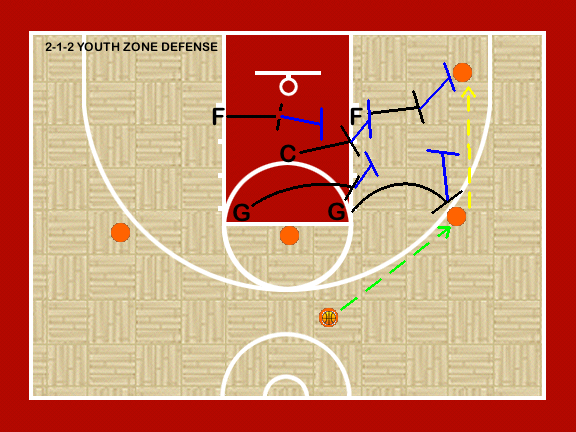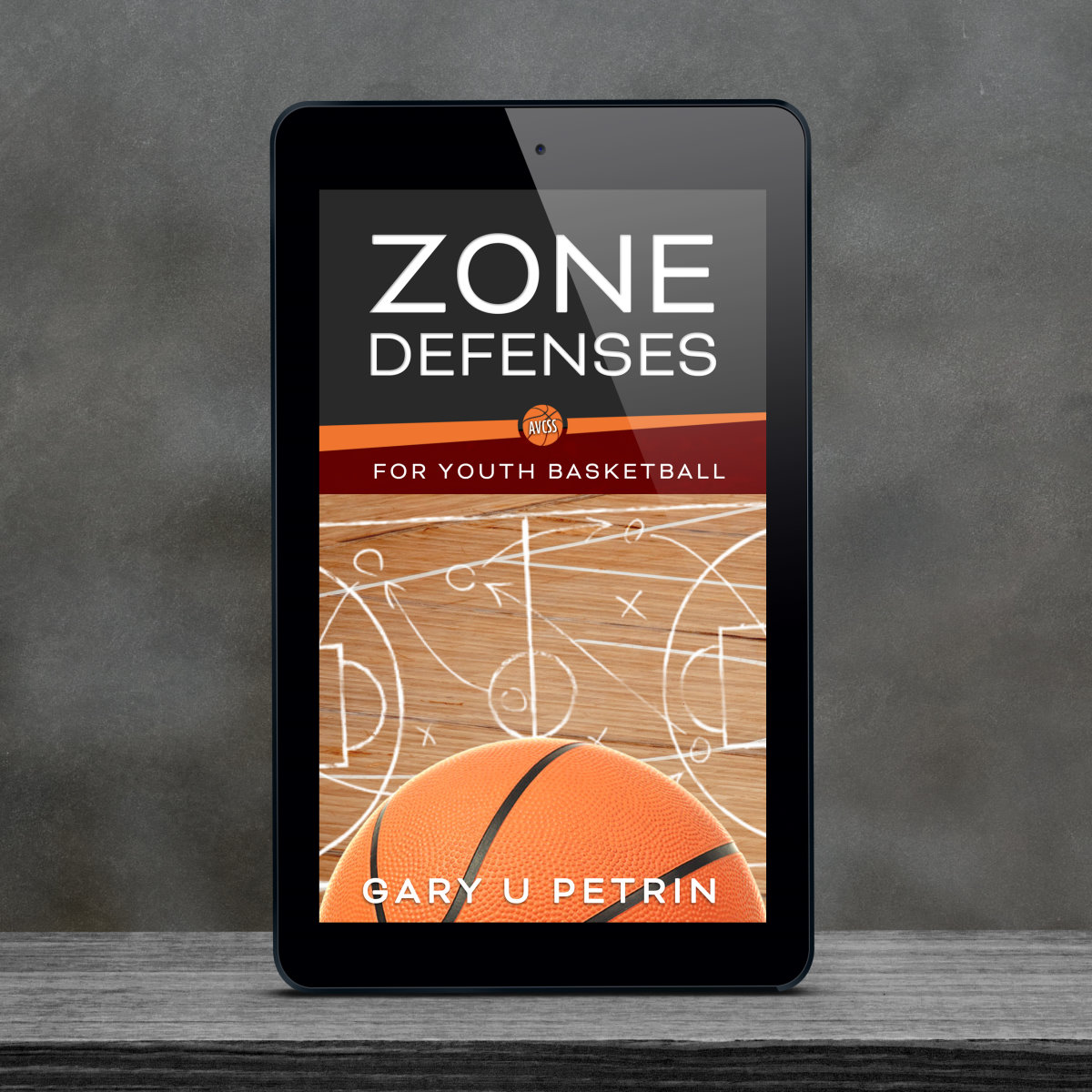“Youth Basketball Zone Defense”
All youth basketball players may not have very good shooting or dribbling skills, but all players should be able to play defense! Coaches must motivate players to play good defense. Players practice shooting, dribbling, free throws, etc, but you never see a player practicing defense on their own. Players must be able to play both offense and defense (play at both ends of the court).
I tell all my players that if they don’t play defense, they won’t get the chance to play on offense. Most players “pace” themselves on defense when they should be playing hard each and every play.
Coaches must ensure that they practice defensive skills, and review youth Zone Defense Basketball in practice (more so than offense ). Coaches must also make sure that their players understand defensive basics and how playing good defense is extremely important to the success of the team. Check out our new AVCSS Basketball download publication “Zone Defenses for Youth Basketball”
Understand how a zone defense can easily be beaten!
The fastest way would be for your opponent to “beat” your defense up the floor – which means the other team will try to run their fast break (transition offense) up the floor quickly before you have a chance to set up your zone defense. Coaches must teach their players to get back on defense quickly, and set up the zone defense!
How Zone Defenses can be used more effectively!
The best way to make your youth basketball zone defenses more effective is to keep switching them up during the game. Run a 2-3 zone for a little while, then switch to a 1-2-2, or even go to man to man for a couple of possessions. Don’t let your opponent have time to figure our your defense – make them have to keep changing what they are doing. It’s all part of the game – to cause your opponent to call a time out, cause frustration with running their offenses, etc.
General Pointers – Zone Defense
Defensive Stances
There are several different stances that coaches should teach their players that are used in a Zone Defense.
Shown are two very important stances for post defense! The “Fronting” and “Behind” stances.

Fronting – Front any player that has good post moves close to the basket – If they cannot touch the ball, they can’t score…
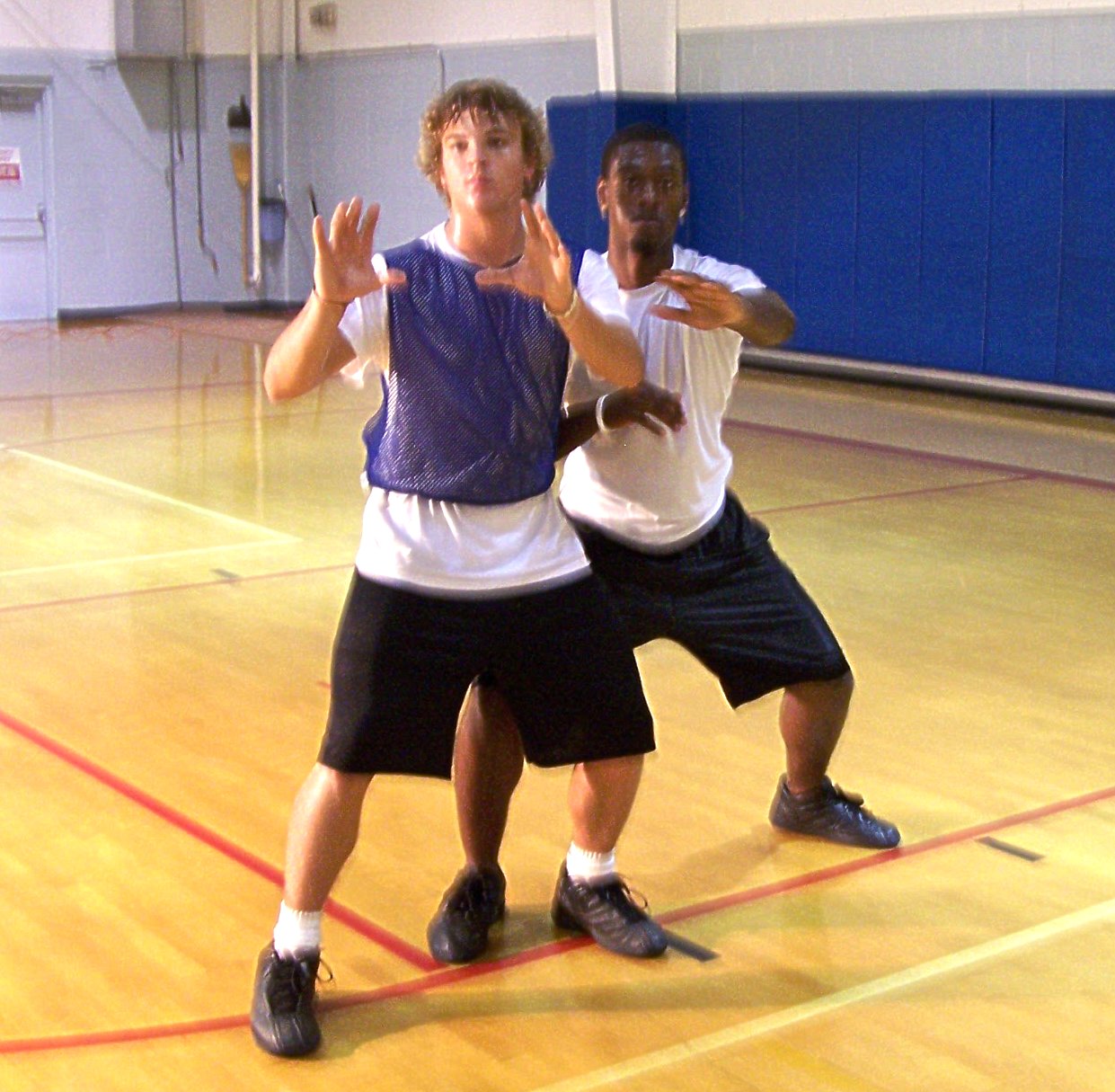
The “Quarter Turn” Stance
Is one of the most important stances to teach your players. It is easy to learn, and is the proper way to defend in a zone defense (especially when the ball is up high in the middle).
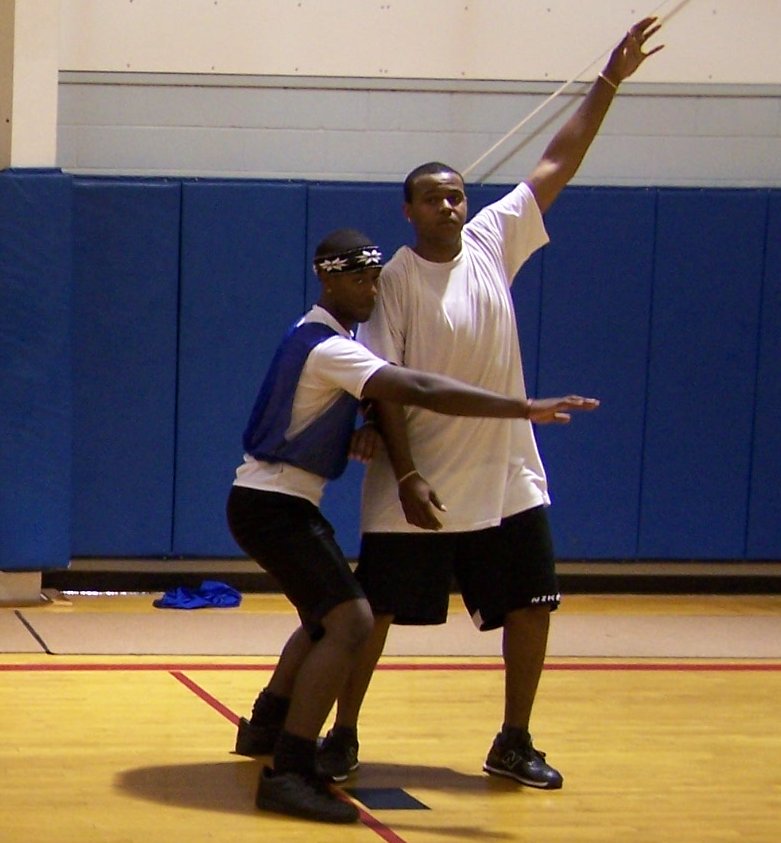
Keep one hand in front, and one behind, stay slightly above the offensive player (always making contact).
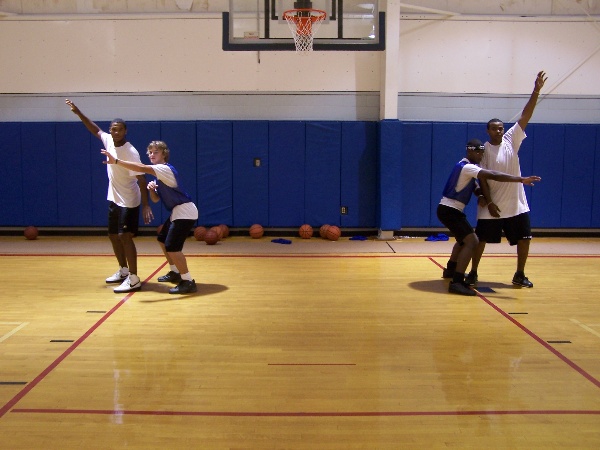
When the ball in in the middle, defenders should use the quarter turn stance. This example shows defenders in a typical 3-2 zone defense.
There is also a bit of “attitude” and “aggressiveness” needed to play good solid defense. Playing defense in the post area can be very physical at times. Get out the blocking pad and work your post defenders so they get used to the contact. Keep this in mind when coaching the younger players, some of them may not like the physical aspect of playing defense – that’s why they have coaches, so you can teach them.
If you are looking for more information on the subject of Youth Basketball Zone Defenses – Check out our menu page “The Basic Principles of Defense” for a more in depth look at the basics…
Basic Principles of Defense Menu Page
Some Reasons for Using a Zone Defense
There are several reasons to use youth basketball zone defenses, but one big reason would be that you just don’t have the players or player experience to play good man to man defense.
Other than that – here are a few more reasons:
1. Zone defenses are easier to learn and execute than man to man defense.
2. There are many types of zone defenses available for different situations.
3. A change of pace – even if your team executes good man to man defense, throwing in a zone defense can help change the tempo of the game (can even give your team a quick rest from the fast pace of playing man to man).
4. Many zone defenses incorporate “traps” in the corners, or at half court, etc. This is a very good way to catch the offense off-guard.
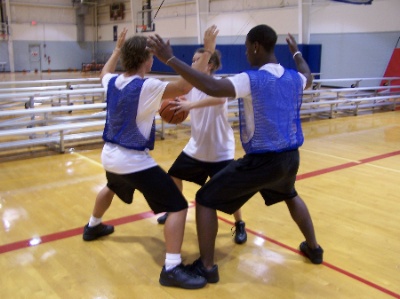
Attack and Trap in the corners – Any corner will work, high corners after the ball passes half court, or low in the outside corners (which is very effective if done correctly).
5. Junk Defenses are another form of zone defense that is highly effective when executed properly. What is so awesome about junk defenses is that coaches really do not practice plays vs. junk defenses, so it can really throw off the momentum of the game.
Diamond and 1 – Junk Defense – Handout
The Main Difference – Zone Defense vs. Man Defense
Coaches must teach players to understand that when playing a zone defense – they are playing an area on the court (a zone). Players are responsible for a zone, and they are not playing man to man. In a zone defense the defender is playing the ball, not a player – the defense moves to areas as the ball is passed around. If a defender roams around or strays too far from their area, it will leave a hole in the defense (and allow scoring opportunities). Players must keep their eye on the ball at all times, and never turn their back to the ball. Every player in a zone defense should move, each time the ball is passed (or the defender will be one pass away from where they need to be).
Basic Zone Defense – Teaching Points / Notes:
1. Coaches should encourage lots of “talking” on defense. This helps the defense to work as one unit, and makes a big difference.
2. If players cannot play defense, they should not be allowed to play offense! Many coaches allow players to slack on defense because they have a great jump shot, but coaches can send the wrong message to the team if this is allowed to occur.
3. Defense wins ball games! Coaches must ensure players understand this.
4. Players should “Attack” on defense, not “React.” There is a big difference.
5. Defending the Inbounds Play – Always run a 2-3 defense when the other team has the opportunity to inbound the basketball at their own basket. Don’t make the mistake of using a man to man defense to defend the inbounds play – don’t give the other team the opportunity for an easy basket!
Defending Inbound Plays / Examples
Defending the Inbounds Play – Handout
Use this basic defensive numbering system:
Using a basic numbering system for defensive positions can be very beneficial for the players. It will help the players remember where to stand (what position they are going in for), and will also help you during your substitutions during the game.
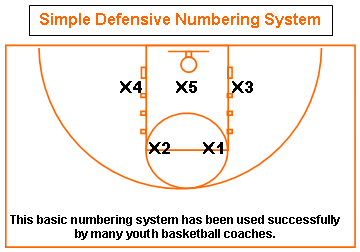
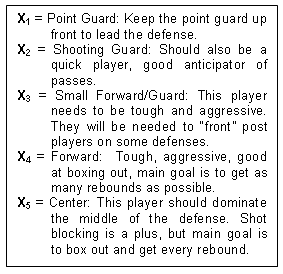
Basic Zone Defense “Sets”
There are two basic sets used with zone defenses – the “1-Guard Front” and “2-Guard Front” set. The 2-3 zone defense (most likely the most popular zone defense) uses 2 defenders up, and 3 defenders on the back line. The 1-2-2 zone defense uses 1 defender up. See the examples of both sets below.

Basic Zone Defense for Younger Players
This defense is great for the younger players. It incorporates the 2-3 defense but adds a trap at the top of the key. Trapping in the middle of the court is not recommended for the older teams. But can surely work at the younger levels. Start teaching the younger players basic trapping – Zone Defense Basketball early. Check out the video clip and handout below.
2-3 Zone Defense Trap (for the younger players)
The 2-3 Trap for Youth Basketball – Handout
Need more information on Zone Defense Basketball – More Plays?
Check out the Zone Defense Plays / Schemes Menu Page – Click Here!
Check out the new AVCSS Basketball download publication “Zone Defenses for Youth Basketball”
Zone Defense Basketball
All the Zone Defense Handouts Here
